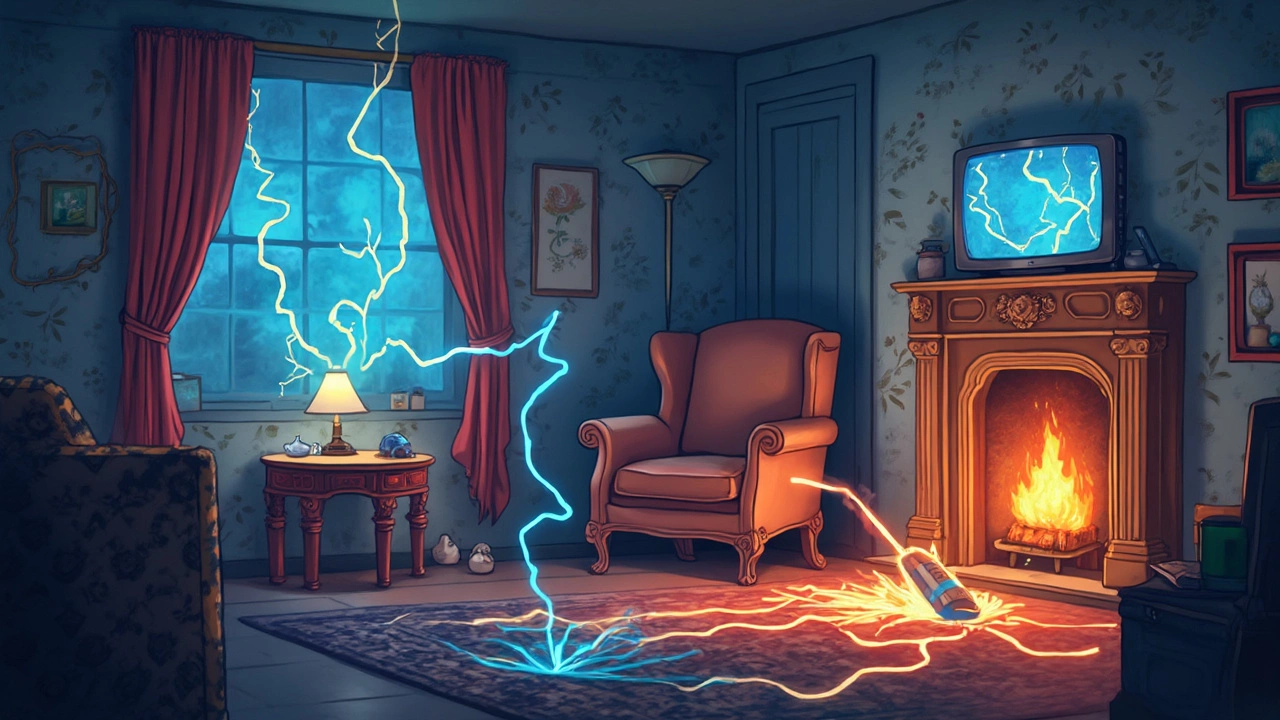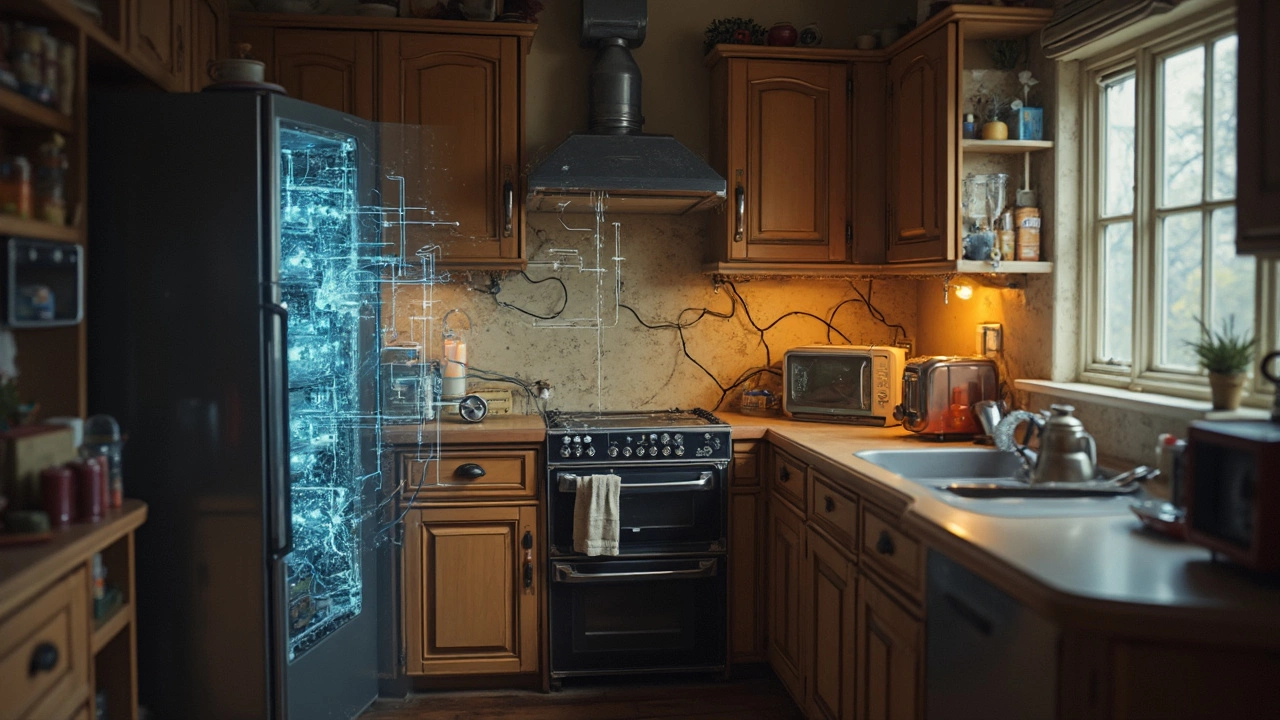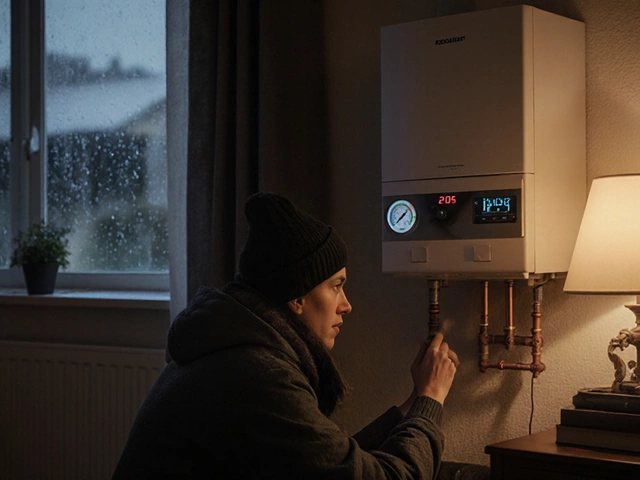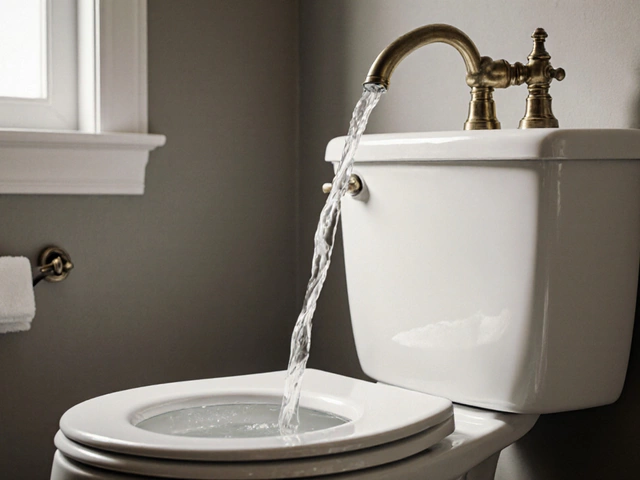Ever wonder what really goes on inside your trusty washing machine or that indispensable fridge in your kitchen? Your home appliances are like the unsung heroes—they just keep working until, well, something goes wrong. But fear not! Understanding their insides can help you become a bit of an appliance whisperer yourself. Who doesn’t love saving a couple of bucks and a headache by solving things at home?
Starting with the basics, appliances like your fridge and washing machine run on electricity. Sounds simple, right? But this invisible juice is controlled through circuits, switches, and a bunch of other components that make your appliance tick. Think of it as a well-choreographed dance happening behind those panels. This understanding might just come in handy the next time your refrigerator hums a bit too loudly or your washing machine decides to play around with its settings all by itself.
- The Heart of Home Appliances
- Common Appliance Problems
- Electricity - The Invisible Force
- Maintenance Tips You Need
- When to Call the Pros
The Heart of Home Appliances
At the core of every appliance in your home is a set of components that work together to make life easier. Let’s break down these essentials so you can wrap your head around what makes your trusty machines tick. It’s not rocket science, but a little knowledge can go a long way.
First stop, the motor. Whether you're talking about a washing machine or a fridge, motors are the driving force. They're like the heartbeat, powering the appliance to do its thing. In a washing machine, the motor spins the drum, while in a refrigerator, it circulates coolant to keep your food fresh.
Another key player is the control board, also known as the brain of the operation. This tiny computer chip manages the appliance's functions, from setting the temperature to adjusting cycles. Whenever your microwave pings with that perfect popcorn setting, you’ve got the control board to thank.
Then there's the compressor, found in appliances like refrigerators and air conditioners. Think of it as the muscle, compressing refrigerant gas and circulating it through coils to keep things cool.
Let’s not forget the smaller heroes—thermostats, sensors, and timers. These components ensure the appliance runs efficiently and effectively. They adjust settings automatically based on what’s happening inside, making sure you don’t have to babysit your dryer through each cycle.
Understanding these components isn't just nerdy trivia—it’s a big deal when something goes off the rails. If your fridge isn’t cooling, it might be time to check the compressor or maybe the thermostat. Knowing which part does what means you can troubleshoot before you declare it a goner.
Common Appliance Problems
While it's great when our home appliances work seamlessly, that's not always the case. Luckily, most issues are pretty common and can be fixed without too much hassle—if you know what you're dealing with. Let's break down some typical problems you might face.
Refrigerators: Ever feel like your fridge is auditioning for a place in a band with all that noise? A noisy fridge usually points to a problem with the condenser fan or the compressor. And if you find water pooling at the bottom, you might be dealing with a clogged defrost drain.
Washing Machines: Washing machines acting up is a classic one. Not spinning? You could be looking at a broken belt or an issue with the machine's lid switch. Or maybe the machine is vibrating more than usual—check for unbalanced loads or look if the level of the machine isn’t right.
Microwaves: If your trusted microwave isn't heating like it used to, the magnetron might be on the fritz. And if your microwave plate isn’t spinning, a worn-out drive motor could be the culprit.
- For dryer appliances that aren’t drying properly, often the lint trap or the vent is clogged with lint. It’s simple but can really disrupt your routine.
- If your dishwasher leaves your dishes cloudy or dirty, check the spray arms or the filter – bits of food can quickly spoil the cleaning process.
Don't ignore the power of preventive maintenance, too. Regular check-ups might not sound exciting, but they often mean fewer breakdowns and a longer life for your appliances. A little attention now can keep your gadgets humming along smoothly and keep away dreaded repair costs.

Electricity - The Invisible Force
Ever flicked a switch and wondered what magic lights up your rooms, heats your coffee, or makes your laundry fresh and clean? That magic is electricity, and it's the lifeblood of home appliances. Electricity powers everything from your bulky fridge to the sleek microwave sitting on your countertop.
Think of your appliances as performers with electricity as their backstage crew, silently making sure everything works smoothly. This wonder force flows through wires, transforming energy into the functions we rely on daily. But it’s not just about plugging things in and hoping for the best—there’s more going on than meets the eye.
Your appliances are designed with circuits and components that control the flow of electricity. For instance, a refrigerator doesn’t just keep things cold; it uses a compressor and coolant system powered by electric energy to maintain a steady temperature. If anything seems a bit off, understanding these basics helps you troubleshoot before you panic and call for repair service.
"Electricity is really just organized lightning." - George Carlin
When issues arise, often it’s a problem with the power supply or a specific component that isn’t functioning properly. Here are some common hiccups and quick checks you might consider:
- Check the power source – is the outlet working? A tripped breaker could be the culprit.
- Inspect the cords and plugs for any visible damage or wear.
- Ensure circuit components aren't loose or burnt out.
The U.S. Department of Energy reports that maintaining your appliances can save you up to 30% on energy bills each year, so a little understanding goes a long way. Keeping your appliance running efficiently not only cuts down the electric bills but also extends their life.
Whether it’s flickering lights in your trusted washing machine or odd noises from the fridge, a bit of knowledge about how electricity works in your devices can lead to easy solutions, saving time, cash, and a call to your overbooked technician!
Maintenance Tips You Need
Keeping your home appliances in tip-top shape isn’t as daunting as it sounds. A little bit of care can go a long way in extending their lives and saving you money. Let's dive into some practical strategies for maintaining your appliances.
First up, let’s talk about the fridge. Did you know that vacuuming the coils behind it can improve its efficiency by up to 30%? Dust and debris can cause your fridge to overwork, leading to higher energy costs and potential breakdowns.
“Regular maintenance not only ensures an appliance's efficiency but significantly prolongs its lifespan,” says Home Expert, Jane Thompson.
Next on the list is your washing machine. Every once in a while, run an empty cycle with hot water and vinegar. This helps to clean detergent build-up and keeps the drum fresh. Also, check the hoses for cracks or leaks every six months.
Don’t forget the microwave. A simple wipe-down with water and vinegar will tackle those stubborn splatters. And here's one more pro tip: cover food in the microwave. Preventing mess is easier than cleaning it up!
Let's not skip appliance troubleshooting for the dishwasher. Clean the filter regularly to prevent clogs, and make sure to inspect the spray arms for blockages. Those little jets can get filled with food remnants that mess with cleaning power.
- Refrigerator: Vacuum coils and check seals
- Washing Machine: Run vinegar cycle and check hoses
- Microwave: Regularly clean with vinegar
- Dishwasher: Clean filter and spray arms
For more detailed inspection, consider the owner's manual your new best friend. It's packed with nuggets specific to your model, like recommended maintenance schedules and parts.
If you notice odd noises or inconsistent performance, it might be time for professional help. Knowing when to bring in the experts can make a huge difference between a quick fix and a replacement.

When to Call the Pros
Alright, so you've given it a shot, and maybe even gotten your hands a little dirty trying to fix your stubborn stove or moody microwave. But sometimes, it’s best to know when to step back and call in the experts. Here’s when dialing up a professional for your appliance repair is the smart choice.
First up, safety is a big deal. Appliances are beasts dealing with electricity, and tinkering around without caution can lead to nasty shocks or even fires. If you have no clue about handling electrical parts, don’t risk it. Professionals are trained to deal with these safely.
Next, if your appliance shows persistent issues despite your best efforts—like a fridge that just won’t cool or a washer that skips on spin cycles—a troubleshooting expert could be worth their weight in gold. They have the tools and the know-how to pinpoint problems that could be too tricky for a DIY approach.
Then there's the warranty to consider. Attempting fixes yourself might void the warranty on newer home appliances. Manufacturers generally won’t cover problems caused by unqualified repairs. Check the warranty terms before you take action.
For some perspective, here’s a quick look at the costs and benefits:
| Task | DIY | Professional |
|---|---|---|
| Simple part replacement (e.g., light bulb change in an oven) | $5 - $15 | $50 - $100 |
| Motor replacement (e.g., refrigerator compressor) | Possible, but complex | $200 - $500 |
| Full system diagnostics | Often guesswork | Precise troubleshooting |
In the end, when things get too tricky or risky, reaching out to the pros isn’t just about fixing things—it’s about ensuring your peace of mind and keeping your household running smoothly. So, don’t hesitate to bring in the cavalry when needed!





